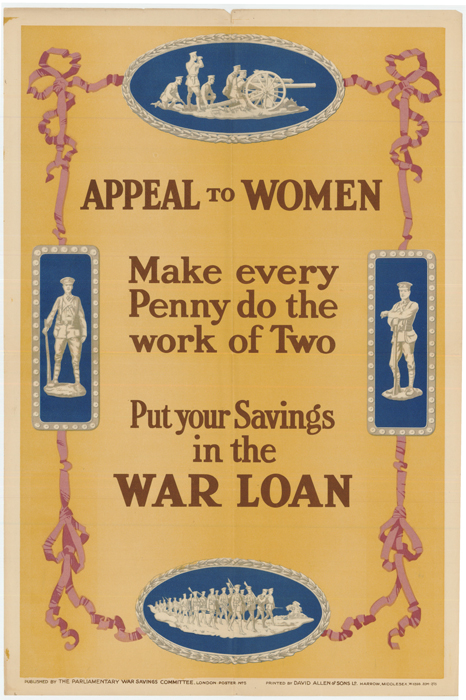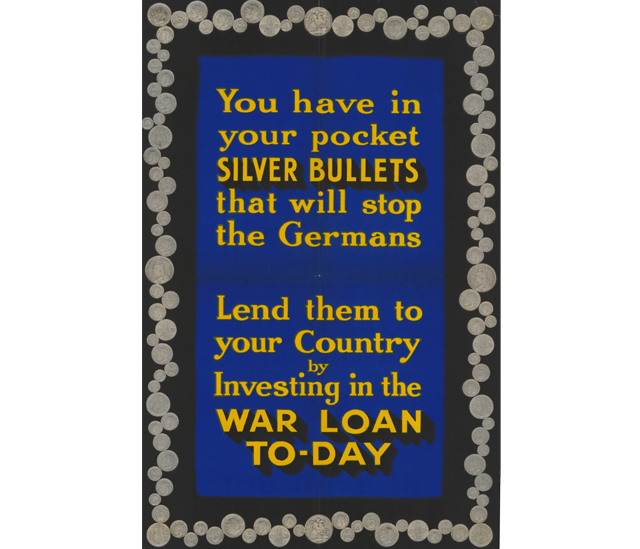Did you know that Britain still has £2bn worth of debts to pay back after the First World War?
During the First World War, the British government offered a series of war loans for possible investment. In 1917, in order to help raise funds to continue financing the war effort, Britain began to issue war bonds; essentially loans and investments from the public to the government. These war bonds were heavily publicised and offered a rate of 5% interest or 4% tax free for 25 years.
 As the war went on, the cost of fighting it rose to almost crippling levels. The cost of bullets and ammunition for a single day in September 1918 was £3.871m which is the equivalent of one hundred ninety-one million eight hundred fifty-seven thousand five hundred ninety-eight pounds and eighty pence in today’s money. At the time, the total cost of the war to Britain was £3.251bn; in today’s money, a cost of one hundred sixty-one billion one hundred twenty-eight million six hundred sixty-two thousand eight hundred pounds.
As the war went on, the cost of fighting it rose to almost crippling levels. The cost of bullets and ammunition for a single day in September 1918 was £3.871m which is the equivalent of one hundred ninety-one million eight hundred fifty-seven thousand five hundred ninety-eight pounds and eighty pence in today’s money. At the time, the total cost of the war to Britain was £3.251bn; in today’s money, a cost of one hundred sixty-one billion one hundred twenty-eight million six hundred sixty-two thousand eight hundred pounds.
At the end of October 2014, the British government announced that they would be paying back £218m of their war bonds as the rate of interest for repayment is currently lower than the 4% at which it was issued.
At the end of the war, the Treaty of Versailles required Germany to admit guilt and responsibility for the war and pay reparations valued, at the time, as £22bn. In today’s money that would be one trillion ninety billion three hundred eighty-one million six hundred thousand pounds. Most of this money was to go to France and Belgium to rebuild their war ravaged countries.
Germany ceased its reparations under the Nazi government and after the Second World War. West Germany took on the bulk of existing reparations with the understanding that any interest on these payments would only be paid in the event of the reunification of Germany. The initial war reparations were settled in 1983 but interest on those payments was repaid by the reunified Germany from 1996 until the debt was repaid in 2010.








